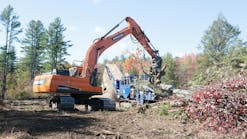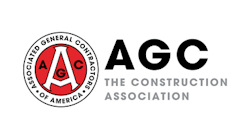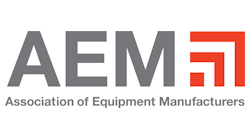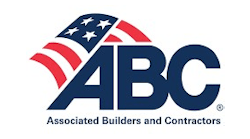Barely a month after the ink dried on Atlas Copco’s strategic alliance with Casagrande USA Inc. to distribute its full line of geotechnical drills in the USA, the first Casagrande rig found its home with Earthcore Services in Pottstown, PA, an eight-year-old company specializing in geotechnical work. Today, Earthcore operates 17 various geotechnical drill rigs, including rigs like the Atlas Copco ECM 370, the company’s most profitable rig to date. The Casagrande M9-1 is Earthcore’s first new rig and first Casagrande product.
Owner Rick Ketchell was a submariner in the US Navy, which he says honed his skills for keeping equipment operating with whatever was at hand. This was a necessary skill with some older used rigs he had in the past; now he is looking forward to working with his first new rig. The M9-1 was purchased to give the company the leverage to compete for larger jobs against the “big guys” and to increase overall efficiency.
“It really wasn’t a planned purchase,” says Ketchell. He had rented a competitive product that was putting them desperately behind schedule. Many contractors will agree with Ketchell’s assessment that a company has to bid on a job without always knowing if the equipment available can do it. “We pride ourselves on taking all types of jobs, even the small ones and especially jobs no one else wants,” he says. The company does it all-from tiebacks and soil nails to horizontal borings, micropiles, caissons, and test borings.
When the company was getting behind schedule on a soil stabilization project in Reading, PA, Ketchell talked with Casagrande sales associate Denis Ambio, along with Atlas Copco’s Bev Hodgins, Richard Soppe, and Shawn McGill. Atlas Copco purchased rigs from Casagrande and had them available when Ketchell needed a rig-fast. He arranged to rent the rig for a month, giving time for a financial solution to be worked out.
The rental amount was also rolled into the price of the rig.
“Atlas Copco really bailed me out,” says Ketchell. “Shawn McGill-the finance guy-said to me, “˜How do you want to do it?’ He gave me about five options to pay for the rig, and he just made it happen.
“I like that Shawn was looking to put me in the rig I needed and didn’t worry about how he was going to make money lending me money.”
Originally, the project was budgeted to take three months. Ketchell says his company will finish in less than two at the current rate.
“I was having constant problems with the other rig and made the call. Atlas Copco delivered a rig the following Monday … We didn’t skip a beat,” says Ketchell.
When the drill was delivered, there were about three hours of training on the new rig. “My guys really know what they are doing, and they are good; that helped us get up to speed fast,” says Ketchell. He says 20 soil nails in a day is considered good, as a general industry rule. The day after the drill was delivered, his crew installed 26 nails, which continues to be the average. “When it comes down to it, it’s not how many you can do in a day; it’s how many perfect ones you can do in a day.”
The Reading wall job design by Pierce Engineering called for soil nails to be placed on 4- to 5-foot centers for every 5 to 6 feet of cut. Two nails are tested in each line, or eight nails for the entire wall. The nails have to sit three to five days before they can be tension-tested, and they must hold for 10 minutes.
The soil nails are tested in tension to 17,000 pounds in order to con- firm the design grout to soil bond. The nail bond stress needed to have a safety factor of two on this project.
Nail testing confirmed a safety factor of about three.
When the project is complete, a ball field will sit behind the Reading School District’s Citadel School, on the former Saint Joseph Medical Center property. Earthcore’s portion of the project includes soil stabilization of a wall 450 feet in length from a 28-foot cut in a hill.
The project was engineered to drill and concrete 406 soil nails at lengths of 12, 20, and 25 feet. The drill prior to the M9-1 rig took five to six minutes to set up on each hole, whereas the M9-1 moves from hole to hole in about 30 seconds, according to Earthcore drillers.
The biggest advantage of the drill is the articulation boom, which is also called the kinematic. The boom can adjust to any angle-up and down or side to side-from the operator’s control board. To move on to the next hole, the rig just has to crawl forward 4 feet, and the operator positions the boom in place.
Ketchell also likes the shock sub feature on the rotary head. When doing auger work, the shock sub absorbs extra resistance.
“This rig is powerful enough to snap off tools. Having a skilled driller that can feather the tool is important, but the shock sub is made to handle this, too,” says Ketchell.
He appreciates the overall versatility of the rig. Because the company does all types of drilling, the rig can be adapted to the project.
When the rig was delivered, it was set up with a dual casing head for advancing casing while hammer drilling. That wasn’t needed on this job, but Ketchell says, “The rig can handle it if we get a job like that in the future.”
“It’s funny,” Ketchell points out. “When you’re smaller or just getting started, no one wants to hire you unless you have a history doing the work.”
With Ketchell’s “take on any job attitude” and the performance capability of the M9-1, it’s certain Earthcore is a definite contender for the jobs as they come-with the confidence that they can get the job done.









